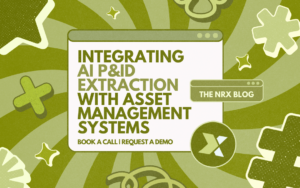According to McKinsey, predictive maintenance powered by APM can reduce maintenance costs by 15 to 30% and unplanned downtime by up to 50%. These results demonstrate why APM (Asset Performance Management) is no longer optional in modern EAM strategies, especially within IBM’s MAS9 ecosystem.

What Is APM?
Asset Performance Management refers to practices and tools that enhance asset reliability and performance through predictive analytics and condition monitoring. Within MAS9, APM uses machine learning algorithms to detect patterns and even automate workflows. Unlike legacy systems that rely heavily on scheduled PMs or reactive interventions, APM empowers organizations to act proactively. This shift is vital in environments where asset uptime correlates directly to revenue.
Why MAS9 and APM Go Hand-in-Hand
IBM has fully embedded APM into the MAS9 suite, which signifies that it is not an add-on but a core part of the platform. MAS9 uses the Health and Predict services to continuously monitor asset telemetry and performance history. The system automatically generates health scores and failure probability forecasts, which allows for early intervention. This is especially useful in asset-intensive industries such as oil and gas, where real-time anomaly detection and optimized maintenance schedules can significantly reduce operational disruptions.

Driving Operational Excellence Through Data
The strength of MAS9’s APM lies in its ability to turn disparate data points into action. By integrating with IoT devices, SCADA systems, and legacy databases, MAS9 builds a digital thread across the asset lifecycle.
The quality of decision-making improves significantly. APM aligns with data governance policies to ensure that insights are built on reliable inputs. When data integrity is maintained, simulation engines and digital twin models yield more accurate forecasts. As businesses push for digitalization, APM provides the analytical backbone that supports smarter decisions across engineering, operations, and finance teams.
Cost Efficiency Without Sacrificing Reliability
Organizations often struggle to balance reliability and cost. Traditional methods involve over-maintaining assets to avoid risk, which inflates budgets. APM flips that model. In MAS9, users can define risk tolerance thresholds and set conditional logic for interventions. If a high-value pump in a manufacturing facility shows signs of vibration deviation beyond baseline but within safe limits, MAS9 can postpone maintenance until needed, which optimizes both uptime and resource use.
APM as a Strategic Lever
Beyond maintenance, APM informs capital planning, sustainability, and workforce safety. Its insights feed into long-term asset strategies, which then helps executives make informed investment decisions. In MAS9, these insights are available through intuitive dashboards and APIs, as this allows integration with ERP and analytics platforms. This positions APM as a central component of any modern enterprise’s digital infrastructure.
Conclusion
The integration of APM within MAS9 transforms asset management from a reactive necessity into a proactive and data-driven strategy. It enhances overall asset performance, reduces operational costs, and improves safety across the enterprise. At the same time, it lays the foundation for advanced initiatives such as predictive maintenance and enables seamless migration to future-ready ecosystems that support sustained operational growth.
Integrating AI P&ID Extraction with Asset Management Systems
ISO 14224 vs Other Maintenance Standards: What Sets It Apart?
Building Trust in Your Asset Data: Strategies for Governance
Share this article




